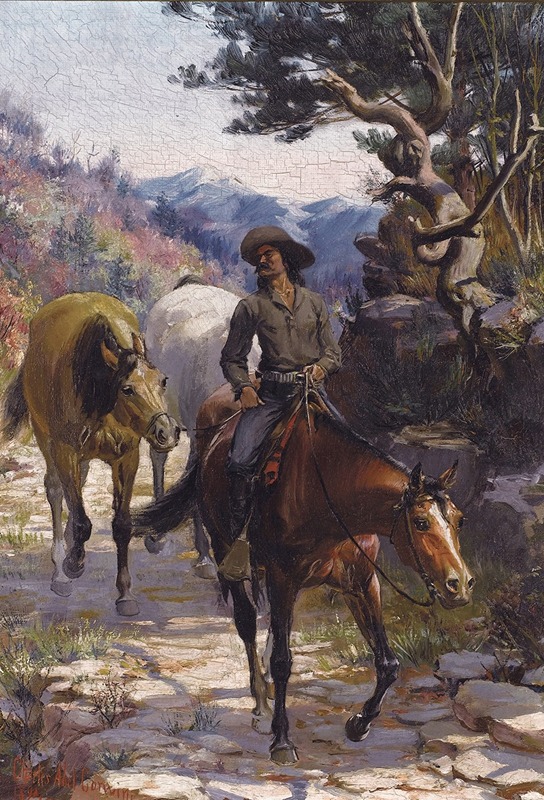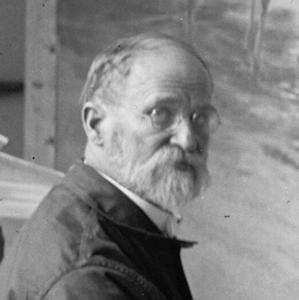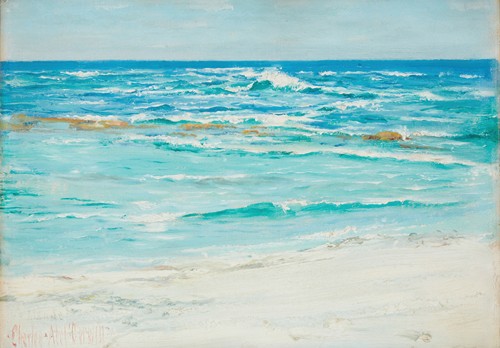

Charles Corwin studied in Munich with Frank Duveneck in 1877. After returning to Chicago two years later, he taught at the Art Institute in 1883 and exhibited there regularly between 1894 and 1905, then again in 1913 and 1914.
Corwin, a member of the Chicago Society of Artists, contributed to the cyclorama called Custer's Last Fight for the Boston Cyclorama Company in 1888, and he also assisted Paul Philippoteaux during the 1880's in the execution of another cyclorama, The Battle of Gettysburg, which has been recently restored (2008).
At the Boston Art Club Corwin exhibited Cape Pond Wood and Drying Out in 1906 and Beeches and Boulders a year later. Another of his landscapes, Edge of the Clearing (unlocated), appeared in the World's Columbian Exposition.
Probably in 1899 or 1900, Corwin spent the summer in Gloucester, where he returned in subsequent years. He exhibited Ten Pound Island, Gloucester, Massachusetts in 1901 at the Pan-American Exposition. Corwin became the Field Museum of Natural History's habitat preparator in 1903. According to Samuels (1976, p. 108), Corwin is responsible for eighty percent of the museum's murals.
Michael Preston Worley, Ph.D.

